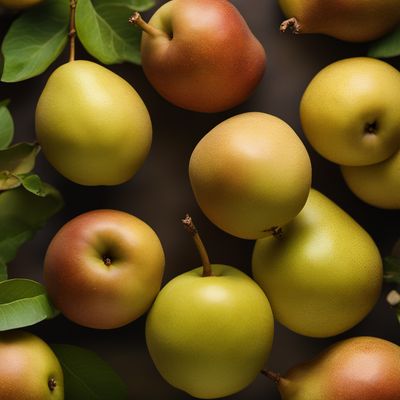
Ingredient
Pears
The Juicy Delight
Pears are a type of fruit that belong to the Rosaceae family. They have a distinctive bell-like shape, a crisp yet juicy texture, and a range of flavors from sweet to slightly tart. Pears come in various colors, including green, yellow, and red, and their flesh can be creamy white or slightly off-white.
Origins and history
Pears have been cultivated for thousands of years and have a rich history in both European and Asian cultures. They are often associated with autumn and are celebrated in festivals and culinary traditions around the world.
Nutritional information
Pears are a good source of dietary fiber, vitamin C, and antioxidants. They are also low in calories and fat, making them a healthy choice for snacking or incorporating into meals.
How to select
When selecting pears, choose fruits that are firm but yield slightly to gentle pressure near the stem. Avoid pears with bruises, blemishes, or overly soft spots. The color of the skin may vary depending on the variety, so refer to specific guidelines for each type of pear.
Storage recommendations
To prolong the shelf life of pears, store them at room temperature until they reach the desired ripeness. Once ripe, transfer them to the refrigerator to slow down the ripening process and extend their freshness. Keep them separate from other fruits to prevent accelerated ripening.
How to produce
Pears can be grown in home gardens or orchards with the right climate and growing conditions. They require well-drained soil, full sun exposure, and regular watering. Pruning and proper care are essential for optimal growth and fruit production.
Preparation tips
Pears can be enjoyed fresh as a snack, sliced in salads, poached in desserts, or baked into pies and tarts. They can also be used to make jams, jellies, and chutneys. Experiment with different varieties to explore their unique flavors and textures.
Substitutions
Apples can be used as a substitute for pears in many recipes, as they share similar characteristics and flavors. However, keep in mind that the texture and sweetness may vary slightly.
Culinary uses
Pears are widely used in both sweet and savory dishes. They can be incorporated into salads, desserts, sauces, and even savory dishes like roasted meats or grilled cheese sandwiches. Their natural sweetness pairs well with ingredients like cheese, nuts, and spices.
Availability
Pears are commonly available in temperate regions around the world, including Europe, North America, and parts of Asia. They are cultivated in countries such as the United States, China, Italy, and Argentina.
More ingredients from this category
Recipes using Pears » Browse all
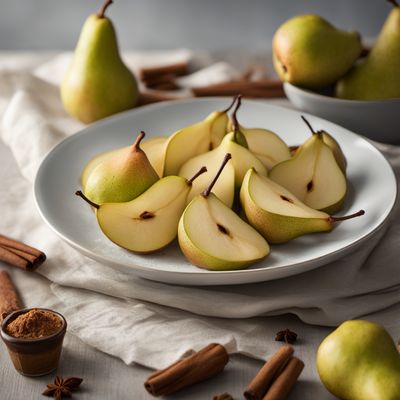
Bavarian-style Pear Slices
Bavarian Delight: Caramelized Pear Slices with a Bavarian Twist

Baechu-kimchi with a Twist
Spicy and Tangy Korean Baechu-kimchi Infused with Unique Flavors

German Pear Honey
Sweet and Tangy Pear Delight
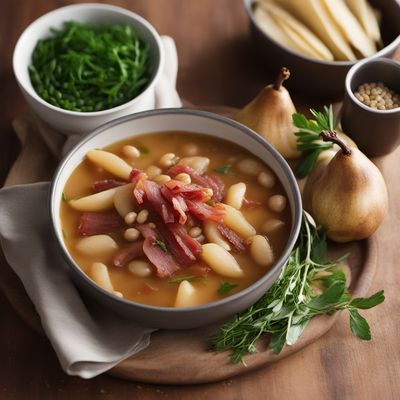
German-style Pear, Bean, and Bacon Stew
Savory Delight: German-inspired Pear, Bean, and Bacon Stew

Swiss Pear Tart
Pearlicious Delight: A Swiss Twist on Tart

Grilled Korean Beef Patties (Tteokgalbi)
Savory Grilled Beef Patties with a Korean Twist

Rwandan-style Stewed Pears
Mellow and Spiced Stewed Pears: A Taste of Rwanda
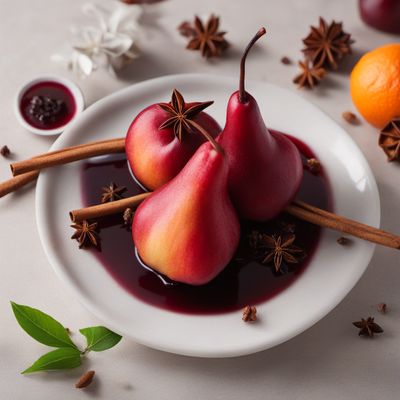
Yunnan-style Red Wine Poached Pears
Silky Pears in Yunnan's Wine Symphony
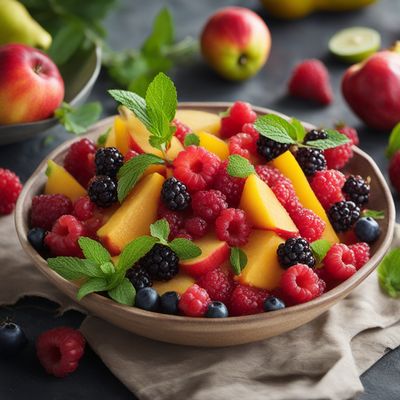
Finnish-style Spiced Fruit Salad
Nordic Fusion: A Finnish Twist on Spiced Fruit Salad
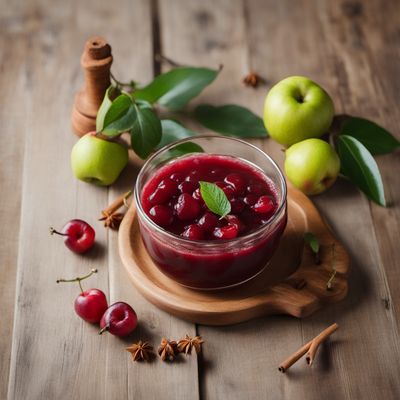
Refreshing Turkish Fruit Compote
Sultan's Delight: A Burst of Fruity Bliss

Haute Gibanica: A Modern Twist on a Croatian Classic
Elevating Međimurska Gibanica: A Haute Cuisine Delight
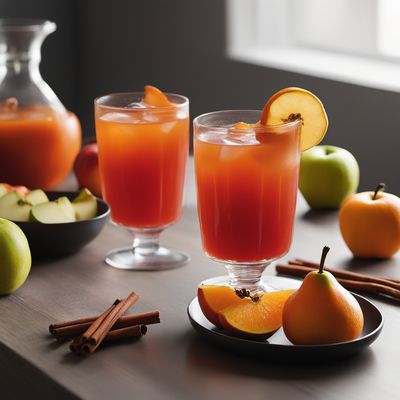
Jeonggwa: Sweet and Fragrant Korean Fruit Punch
A Symphony of Sweetness: Jeonggwa, the Delightful Korean Fruit Punch
